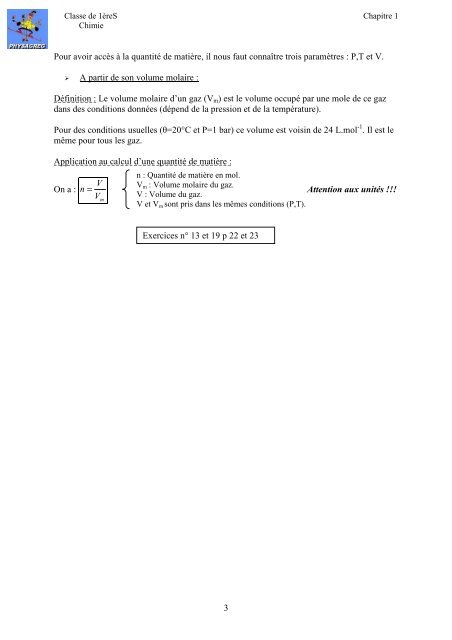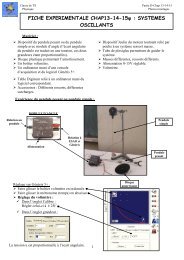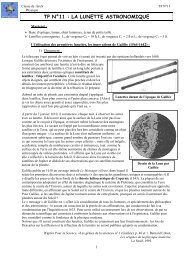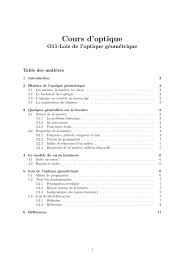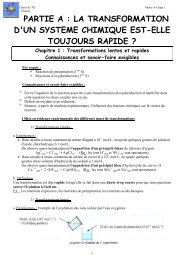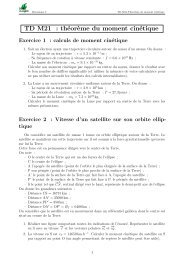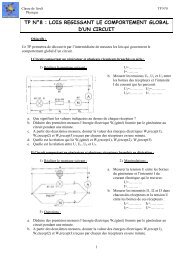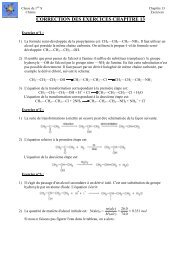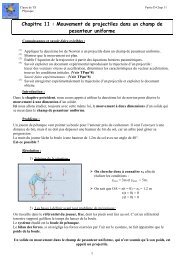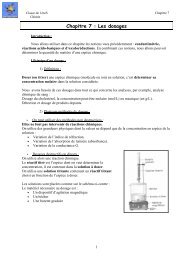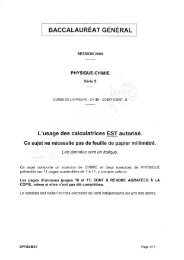Pourquoi et comment mesurer des quantités de matière - Physagreg
Pourquoi et comment mesurer des quantités de matière - Physagreg
Pourquoi et comment mesurer des quantités de matière - Physagreg
You also want an ePaper? Increase the reach of your titles
YUMPU automatically turns print PDFs into web optimized ePapers that Google loves.
Classe <strong>de</strong> 1èreS Chapitre 1ChimiePour avoir accès à la quantité <strong>de</strong> <strong>matière</strong>, il nous faut connaître trois paramètres : P,T <strong>et</strong> V. A partir <strong>de</strong> son volume molaire :Définition : Le volume molaire d’un gaz (V m ) est le volume occupé par une mole <strong>de</strong> ce gazdans <strong><strong>de</strong>s</strong> conditions données (dépend <strong>de</strong> la pression <strong>et</strong> <strong>de</strong> la température).Pour <strong><strong>de</strong>s</strong> conditions usuelles (θ=20°C <strong>et</strong> P=1 bar) ce volume est voisin <strong>de</strong> 24 L.mol -1 . Il est lemême pour tous les gaz.Application au calcul d’une quantité <strong>de</strong> <strong>matière</strong> :On a :n : Quantité <strong>de</strong> <strong>matière</strong> en mol.V Vn = m : Volume molaire du gaz.Attention aux unités !!!V V : Volume du gaz.mV <strong>et</strong> V m sont pris dans les mêmes conditions (P,T).Exercices n° 13 <strong>et</strong> 19 p 22 <strong>et</strong> 233


